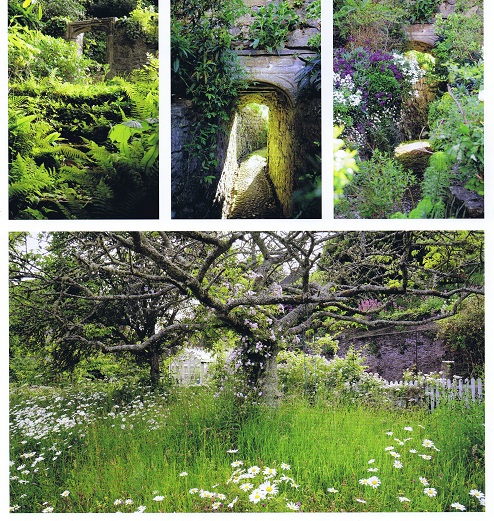Book Review: Landscape of Dreams by Isabel and Julian Bannerman
by Eric Hsu
All images are the courtesy and copyright of Isabel and Julian Bannerman.
Garden designers are like fashion designers in that they memorialize their work through books. Their books are either modest affairs or expensive productions. The former can become deserving classics for their information dispensed with wit and poetry. The latter can lapse into the clichéd interior design format - large two-page photographic spreads, minimal or no text, and glossary to matt paper. A brief introduction may preface the photography. They have their sole purpose of mindless dreaming and fantasies of what money or time can achieve. Isabel and Julian Bannerman's Landscape of Dreams (Pimpernel Press 2016) toes these two categories of being informative and visually slick.
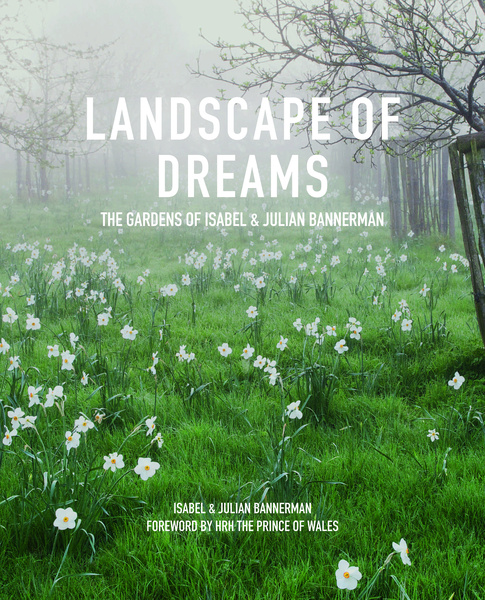
In a NY Times T Magazine profile of their Cornish garden, Tim Richardson describes the husband and wife team as to-go ’90s landscape designers for high profile clients that included the Prince of Wales (at Highgrove), Lord Rothschild (Waddesdon Manor), John Paul Getty Jr. (Wormsley) and the Marquess of Cholmondeley (Houghton Hall). Their projects veer heavily towards grandiose ones rather than the townhouse and urban gardens other designers take on. Their gardens have the bold armature of wooden or stone structures embellished with anthers, finials, and carvings that are dramatic peers to their plantings. Grasses are seldom used as they are in contemporary gardens, but roses, aquilegias, tulips and topiary, all archetypal elements of classic country gardens, are liberally deployed. As prescriptive as this look may seem, the Bannermans have developed a knack for blurring the lines, muffling out the formality with self sowers, perennials that flop decadently over the hedges, and curvaceous topiary forms. They admitted this feat a slippery one: "Trying to make it look as if gardening is not happening particularly is a very tricky deception, full of contradiction since it is actually tuned up and put on steroids."
A foreword by HRH The Prince of Wales opens the book with an enthusiastic acknowledgment of the Bannermans' interdisciplinary talents in architecture, landscape, and interior design. This royal endorsement hardly adds to the book apart from the seal of approval to readers unsure about the book's contents. What follows is an autobiographical chapter in which the Bannermans recount their upbringing, early influences, and philosophy. Their reminiscences are revealed with surprising candor especially about people whose lives happened to collide with them. Reading passage after passage unwinding about these quirky individuals is like a communion with the fantastical characters who populate Alice in Wonderland. DV or David Vicary is described as [a] magical scarecrow of a man, beautifully turned out in his uniform of dark brown alpaca long waistcoat - a sort of subfusc outfit after Doctor Johnson - had a mop of excellent hair definitive nose, and wry vivacious eyes.' Coincidentally the Bannermans allude to Alice's Adventures in Wonderland for its 'illusory, hallucinatory quality' they strive to instill in their work.
The Bannermans are not shrinking violets when it comes to theatricality in the garden. They have marvelous fun poring over historical texts, paintings, and references to pierce together imaginative gardens that would have delighted garden goers in the sixteenth and seventeenth centuries. It is precisely what they have achieved in half of the former walled kitchen garden at Arundel Castle, Sussex. From the Somerset House garden plan the Bannermans tailored the two-terraced garden - the upper terrace being a trio of courts interlocked by a oak pergola, and the lower terrace a miniature castle, Oberon's Palace. Two graveled courts with a fountain and four catalpa trees each flank the central court with its canal of water. Oak urn fountains topped with gilded bronze agaves squirt water into this canal. A large open lawn planted up with alliums transition between the upper and lower terrace. Oberon's Palace, which takes after the Little Castle at Bolsover, is miraculously mounted on a plinth of Sussex ragstone rocks. The interior palace walls are encrusted with shells and corks, and the room centerpiece is The Dancing Crown. The Bannermans left no detail undone - dolphin, dog, and lion figurines adorn the fountains in the catalpa courts while deer anthers adorn the Park Temple. Sea monkeys guard the arch entranceway of Oberon's Palace. One cannot help smile at the playful atmosphere of all the features, even if the embellishment may come across over the top for some.
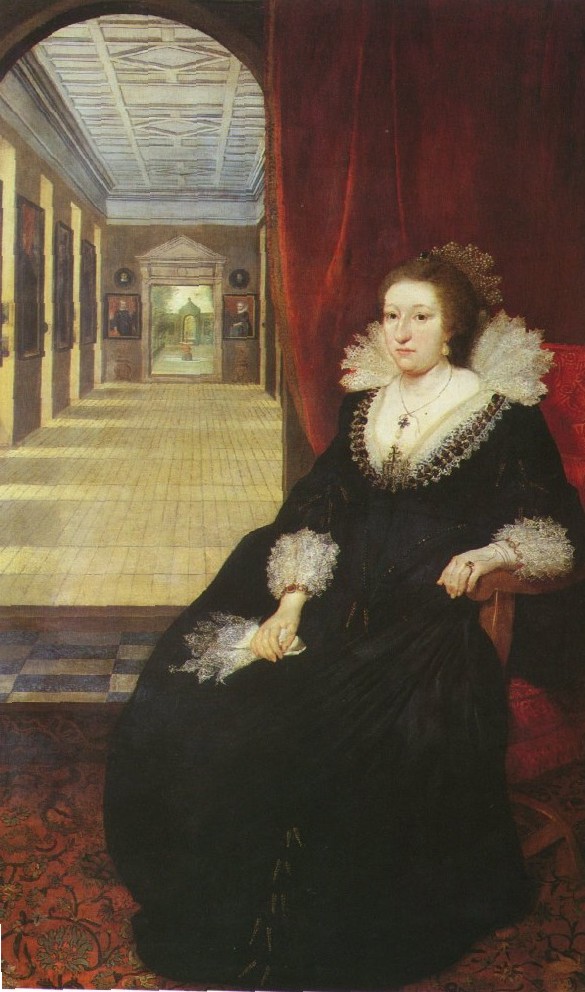

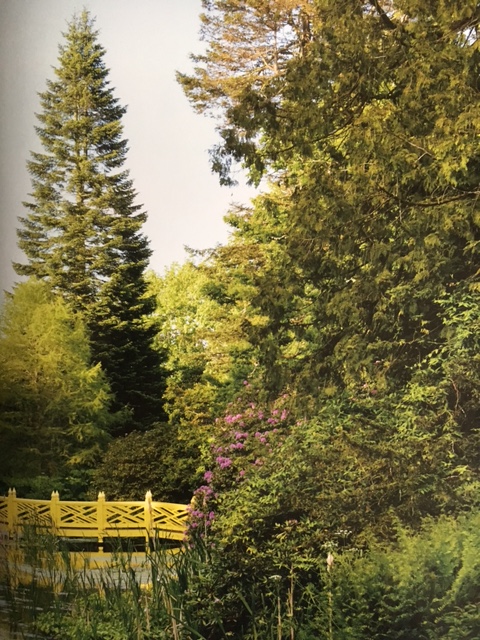
If Arundel Castle is the court jester in the Bannerman design portfolio, then Woolbeding is the royal advisor who parlays a sensible and sympathetic strategy for problems. In tackling Woolbeding, the Bannermans realized: "Lightness of touch is an intangible quality, something we all always seek to achieve and can never be sure of finding." The late Simon Sainsbury and Stewart Grimshaw already established the formal and productive gardens since purchasing the property in 1970s. For a long time, they struggled with unifying the 'Long Walk' to the woodland garden, a large copse of trees, and a placid body of water. A painted Gothic pavilion was positioned listlessly on a grassy knoll without any incentive to visit it. To announce the change from open pasture to arboretum with its structural elements, the Bannermans constructed a Gothic ruin archway entrance. A visitor then would take this entrance as the cue to anticipate the next episode. Because the owners did not wish to move the pavilion, it became the reference point under which a 12' cliff fashioned out of Sussex sandstone was created. Water would cascade from this cliff, breaking up the still waters and giving impetus to the pavilion views across the lake. A Chinese bridge painted yellow to echo yellow flags and skunk cabbages hovered enchantingly close to the water surface and provide views towards the pavilion. The Bannermans continued the 'journey' to a thatched hermitage and the cave of the Rother god, conceived to be the 'father' of the river. They installed a tufa monolith, which oozed water from the Rother through clever engineering, in the circular glade where Simon and Stewart had positioned statues of four seasons. This monolith, "a strange and powerful beast, slumbering, closed-winged but latent", introduces mystery and a note of danger without which a garden can be atmospheric. It is a light theatrical touch that brings cohesion to the woodland garden, lake, and the pavilion.
Hanham Court and Trematon Castle, the last two gardens in the book, are personal ones which the Bannermans patiently and diligently wrestled out of their derelict, overgrown status quo. Had not for the help of the antipodeans (one Kiwi who looked after the children and cooking, and seven Aussies who helped with the construction), the garden at Hanham Court would not have materialized given the sorry state of the property at the beginning. The inception of the garden at Hanham Court prompts a comedic recollection of a conservation officer who, initially horrified at the swimming pool within the remnant medieval ruins, was less than enthused about being duped by the architectural chicanery the Bannermans constructed. It was not simply enough to undertake the house and garden restoration for the impoverished soil needed earth backfills and compost additions before anything was to be planted. The ancient tangle of wisteria was forcibly pulled down to wire the house and retrained to maximize their flowering productivity, and roses like Rosa bankisae ‘Lutea’, ‘Felicite Perpetue’ and ‘Rambling Rector’ joined in the climbing chorus. Nonetheless each project led to another until Hanham Court became civilized with the requisite romanticism. It’s a place that is breathtaking in scale when you visit as I did several years ago on an open garden day. Like Alice who crawls into the rabbit hole or mirror only to end up in an alternate world, you first enter through the wicket gate that is a brief dark interlude before the colors, scents, and all that is the Bannerman magic overwhelm you.
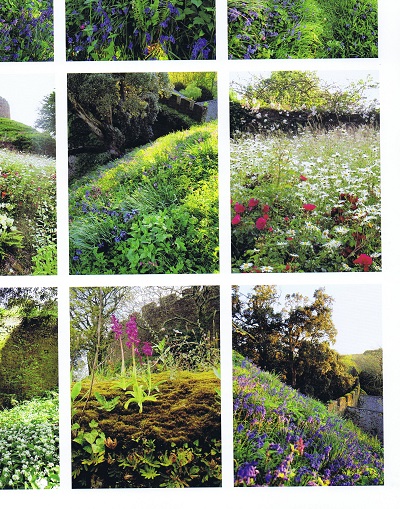
Despite its Cornish location, Trematon proved no picnic either. Archaeological restrictions (no duplicitous ruins and no gullible enforcers) meant no wanton digging. Years of neglect had allowed winter heliotrope (Petasites fragrans) to spread aggressively and smother out the native wildflowers. Sloping terrain doubled the time it took to complete projects. The Bannermans describe their first year as grey and disconsolate from the rain that fell incessantly. 'Grey skies, grey granite, grey shaley soil, bitter and wet it was, and the boiler was bust, when we landed with a lot of furniture in a heap from Bristol.' Just as they had done with their previous derelict projects, they valiantly persisted as they replanted their losses, wrenched out boulders, and excavated new planting holes. Bramble, ground elder, and heliotrope were either sprayed or pulled out from the banks. Judging from the photographs, much of their efforts appeared to pay off. The removal of the invasive and aggressive weeds allowed some of the native wildflowers to return, and made what was once impenetrable promising canvas to 'paint'. Given how the castle walls already provided the essential backdrop, the Bannermans describe a dizzyingly range of plants, especially those scented, added over the last five years. Their emphasis on scent is purposeful for 'Cornwall is good for scent, being warm and wet and, when the sun does appear, aromatic plants exude their turpentine tang.'
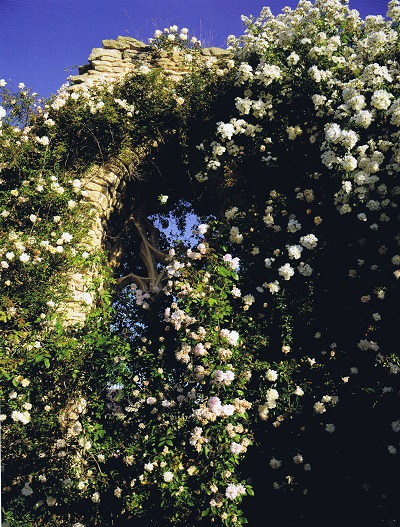
One of the admirable aspects about the Bannermans is their fluency with different plants, a skill that is becoming more uncommon among garden designers and landscape architects. They act like discriminating magpies who retain their proven prizes, experiment a bit, and fold in new possibilities to an existing scheme. Philadelphus (mock orange), old roses, pinks, lilies, sweet peas and lupines are always introduced to gardens with tour de force herbaceous borders. It is easy to pooh pooh these plants in these gardens, but the Bannermans cherish them for their 'lived in' effect they inject in a youthful garden. They are familiar and sensual, evocative of the dreamy past.
If a criticism is to be volleyed at the book, the photography occasionally fails to match the exacting high standards of the garden. Either the authors or the editors have taken the unusual step of not commissioning a garden photographer to illustrate the text, instead opting for the authors' photography. The downside of such photography is their uneven quality, which can be a letdown for those accustomed to crisp and sharp images in other garden books. Some of the photographs would have been culled to prevent repetition - one or two close-ups of the plantings would simply suffice. On the upside, the 'homemade' feel of the photography gives the text a personal touch as if we were peering through a creative scrapbook or compendium of the authors' work.
Landscape of Dreams is a book which deserves periodical poring for its sophisticated fluency in landscape and garden design. It demonstrates that truly talented designers do not produce products of hubris, but of respect and humility to the sites they are commissioned to work on. The Bannermans are sensible to realize that each site has its limitations that require their plans to be specific and individualistic.


